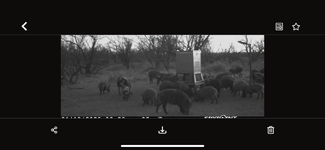Would this fit the definition of a “shot out” barrel?Witness marks on screws are telling. The way a gun groups (stringing direction) is telling as to what could actually be happening, action versus scope/ring failure or turret failure as an example.
It can get a bit “tail chasey” sometimes using good/known gear but the culprit is always able to be identified through process of elimination and shooting.
As an example. I chased one two weeks ago. I was missing at 400-600 yards on targets as my first shots of the day and first shots with that gun in about a week. I was missing consistently but not in the same direction, in a low wind environment with good/known dope.
Went to 100 yards. 3” group with a good lot of ammo and known/good gun. What could it be?
Suppressors always checked first and it was fine. Witness marks on all screws looked good. Action properly seated in the stock. Nothing loose. Scope and rings/ring bases look fine. No debris down in between barrel and stock. Gave the scope a few light punches, nothing rattling. Turrets dialing fine. Chamber and throat look good. Barrel is tight. Nothing visibly cracked.
Shot 10 more. Same 3”ish group.
Bust out the chrono to check velocity. Here’s where it gets interesting. My extreme spread over 10 more shots was around 200 FPS.
Went home. Dusted off a cleaning rod and cleaned the barrel, chamber, etc. Went back out. Shot 10 to foul it.
Chrono and group for 10 more shots at 100 yards. 5” group, velocity extreme spread over 250.
The gun has a new barrel on it and is back to work.
I went with what you described no proofing on my own other than buying proven well made rifles and optics and using them

